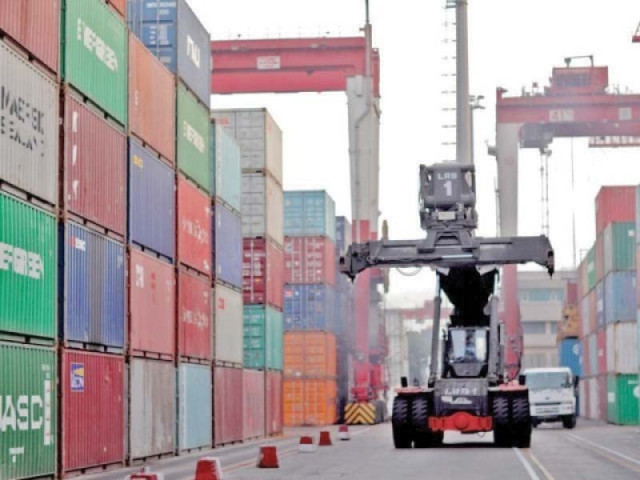Import measures yield $4.8b savings
Result in trade deficit of only $9.4b during first five months of this fiscal year

Last month, Pakistan maintained tight control over imports to offset the shortfall in foreign loans, resulting in a trade deficit of only $9.4 billion during the first five months of this fiscal year – saving about $4.8 billion through administrative measures.
The latest trade bulletin from the Pakistan Bureau of Statistics (PBS) for November also suggests that the country’s annual imports may now remain even lower than the downward revised estimates by the International Monetary Fund (IMF).
The gap between imports and exports shrank to $9.4 billion during the July-November period of the current fiscal year, according to the national data collecting agency. The trade deficit was $4.8 billion or 34% less than the comparative period of the last fiscal year, it added.
The continued tight control over imports has lessened the pressure on foreign exchange reserves, which slipped to $7.2 billion as of last month despite the IMF programme. The low available financing leaves the government with no option but to keep managing international trade.
Unlike the previous programme, the IMF has not pressed Pakistan hard to arrange additional foreign loans despite a gap. It has also not created troubles for Islamabad on the issue of restrictions on imports.
During the recent review talks, the IMF has cut its projections of the current account deficit and imports. But the latest statistics indicate that imports may now remain even lower than the already downward revised projections by the global lender.
During the first five months, Pakistan imported $21.6 billion worth of goods, down by $4.5 billion, or just over 17%, compared with the same period last year. The imports during the first five months were equal to only 37% of the new IMF projection of $58.4 billion.
The IMF had not accepted the finance ministry’s projection of imports worth $54.5 billion during this fiscal year. The lender has now estimated it at $58.4 billion, but its revised figure is $6.3 billion less than what it estimated in July this year.
Effectively, every saved dollar through the reduction in imports is taking the pressure off the reserves that still remain at a critical level of only 1.4 months of import cover.
The curb on imports does have implications for the country’s economic growth and inflation. The IMF has also lowered the economic growth forecast to 2% for this fiscal year after it remained negative 0.2% in the previous year.
Read: $8b discrepancy unearthed in exports, imports
The PBS stated that exports marginally increased during the July-November period and stood at $12.2 billion. There was a $230 million increase in exports in five months. The five months’ exports were equal to 40% of the IMF’s downward revised projection of $30.6 billion.
On a month-on-month basis, the trade deficit also shrank 13.2% despite some contraction in exports. Exports decreased 4.4% to under $2.6 billion last month. Imports too reduced 8.3% to $4.5 billion. The month-on-month trade deficit further shrank to $1.9 billion.
The rupee swings continue post the IMF talks. After peaking at Rs288 to a dollar, it has again marginally appreciated on a daily basis, and its value has now dropped below Rs285.
Pakistan’s gross external financing needs had been estimated at over $28 billion at the start of this fiscal year. The figure is now revised to $25 billion by the IMF due to fewer imports, restructuring of 31 Chinese loans issued by the Export-Import Bank of China, and major dollar purchases by the central bank from the market.
On a year-on-year basis, in November, exports amounted to $2.6 billion, higher by $183 million, or 7.7%, compared to the same month of last year. But the imports dropped 13.5% to $4.5 billion. As a result, the trade deficit narrowed 32% to $1.9 billion in November, a reduction of $877 million compared to the same month of last year.
The Washington-based lender had not agreed to Pakistan’s projection of $4 billion to $4.5 billion current account deficit during this fiscal year against the earlier projected figure of $6.5 billion. The IMF now projects a deficit of $5.7 billion -- a reduction of about $770 million compared to its old estimates.
Published in The Express Tribune, December 2nd, 2023.
Like Business on Facebook, follow @TribuneBiz on Twitter to stay informed and join in the conversation.


















COMMENTS
Comments are moderated and generally will be posted if they are on-topic and not abusive.
For more information, please see our Comments FAQ